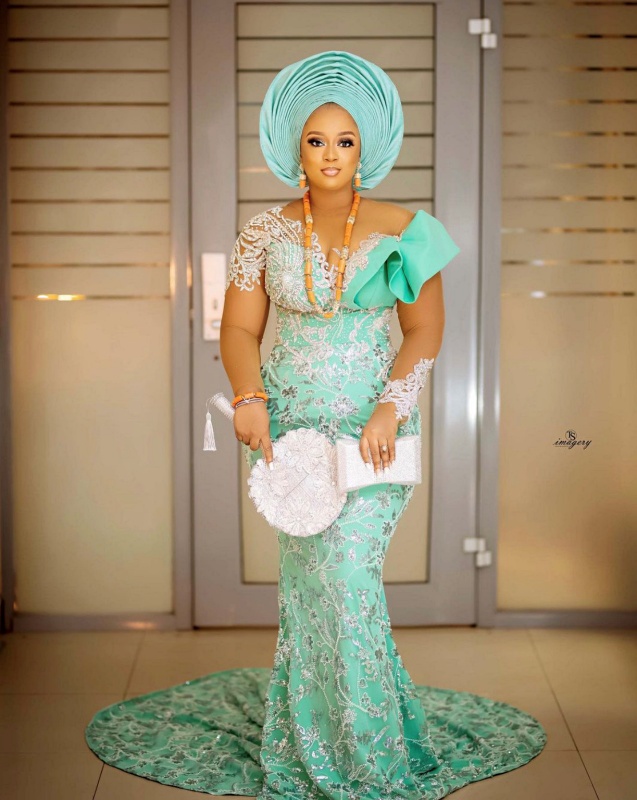1. **Western (European and American) Traditional Dress:**
- Typically, the traditional Western bride wears a white gown. This tradition was popularized by Queen Victoria in the 19th century. The white dress symbolizes purity and innocence. Gowns often feature lace, pearls, and sequin embellishments, and are usually accompanied by a veil and train.
2. **Indian Bridal Sari or Lehenga:**
- In India, brides typically wear a sari or a lehenga in vibrant colors like red, which is considered auspicious. The garments are elaborately embroidered with gold or silver thread (zari work) and adorned with sequins and beads. Bridal attire is often completed with heavy jewelry, a headpiece, and other traditional accessories.
3. **Japanese Kimono:**
- Traditional Japanese brides may wear a white kimono called "Shiromuku" for the ceremony, symbolizing purity and maidenhood. This is usually worn during the traditional Shinto wedding ceremonies. Another option is the colorful "Uchikake," an outer garment worn over the kimono that is often richly decorated with embroidery and motifs of cranes, flowers, and other auspicious symbols.
4. **Chinese Qipao or Cheongsam:**
- In China, the traditional wedding dress is often a red qipao or cheongsam, a form-fitting dress made of silk. Red is chosen for its association with good luck and joy. These dresses are commonly embroidered with gold dragons and phoenixes, which symbolize the balance of male and female power.
5. **Korean Hanbok:**
- The traditional Korean wedding outfit is the hanbok, which consists of a jeogori (a short jacket with long sleeves) and a chima (a full, wrap-around skirt). Brides often wear hanboks in bright hues like red and yellow, and the garments are made from materials such as silk and embroidered with floral designs.
6. **African Traditional Attires:**
- Across Africa, traditional bridal wear varies significantly. For example, in Nigeria, brides from the Yoruba tribe wear an Aso Oke, a hand-woven cloth thatís worn as a wrap-around skirt, blouse, and head tie in rich colors and intricate patterns. In Ethiopia, brides often wear the Habesha Kemis, a white dress made from cotton fabric with colorful woven borders.
7. **Middle Eastern Dress:**
- In many Middle Eastern countries, the wedding dress can be extremely lavish. For example, in Lebanon, itís common for the dress to be very ornate. Brides might wear a long gown embroidered with gold threads, and the outfit is often completed with a luxurious veil and sometimes a tiara.
These examples only scratch the surface of the rich variety of bridal attire across different cultures. Each dress reflects the cultural heritage, aesthetic preferences, and symbolic meanings important to the region and its people.

800 × 637
Source:https://omastylebride.com/fabulous-traditional-wedding-bridal-looks-of-2021/

943 × 736
Source:https://nyomplanet.com/blog/traditional-african-wedding-attire
1024 × 768
Source:https://www.theknot.com/content/nontraditional-wedding-dress-ideas
852 × 1136
Source:https://www.businessinsider.com/wedding-dresses-from-around-the-world-2016-1

511 × 593
Source:http://folkcostume.blogspot.com/2014/04/short-overview-of-traditional-bridal.html

1245 × 2560
Source:https://thebridalcollection.com/how-to-create-a-simple-and-classic-wedding-look/

933 × 1400
Source:https://www.kleinfeldbridal.com/product-category/dresses/classic-wedding-dresses/

460 × 1024
Source:https://kipfashion.com/traditional-nigerian-wedding-dresses/

1066 × 800
Source:https://allurebridals.com/

393 × 750
Source:https://mymodernmet.com/traditional-wedding-outfits/

